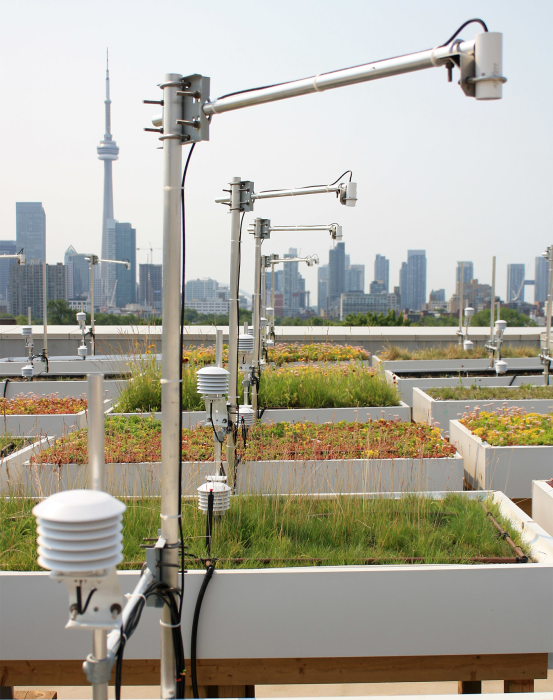


The Problem – How to optimize green roof performance
The University of Toronto (U of T) Green Roof Innovation Testing Laboratory (GRIT Lab) was established to investigate and optimize performance of green roofs—roofs covered with plant beds that insulate, absorb precipitation, and provide aesthetic and environmental benefits. The GRIT Lab conducts ongoing experiments consisting of a weather station and thirty-three 1.22 m x 2.44 m (4 ft x 8 ft) raised beds with different soil media, amounts of soil, vegetation types, and irrigation regimes. The goal is to evaluate four main variables for green roofs in Southern Ontario:
- Stormwater management
- Evaporative cooling
- Biodiversity
- Lifecycle costs
The Solution – Data collection from thirty-three test beds
This application uses one CR3000 datalogger and two CR1000 dataloggers, along with several AM16/32B multiplexers to measure the almost 300 sensors used to compare the following four parameters:
- Growing media type (FLL standard versus high organic content)
- Growing media depth (4 in. versus 6 in.)
- Vegetation community (sedum versus native and biodiverse prairie-meadow mix)
- Irrigation regimes (none, timer activated, soil moisture sensor activated)
Each bed is instrumented with several temperature sensors, installed at different depths in and under the soil media and heights above the soil. These instruments measure heat flux through the different soil media. An infrared radiometer also measures the average temperature of the vegetation.
Stormwater management and irrigation regimes are also being investigated using high-capacity tipping buckets installed beneath each raised bed to determine runoff from the different soil media. Soil-moisture sensors track how much moisture the soil retains. A climate station measures general weather conditions and rainfall, and a flow meter installed on a pressurized irrigation system approximates amounts of water entering each bed to determine runoff. Different irrigation regimes, soil media, and plant types should have a profound effect on runoff and water retention, especially between storms or watering.